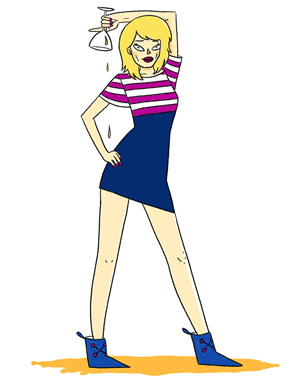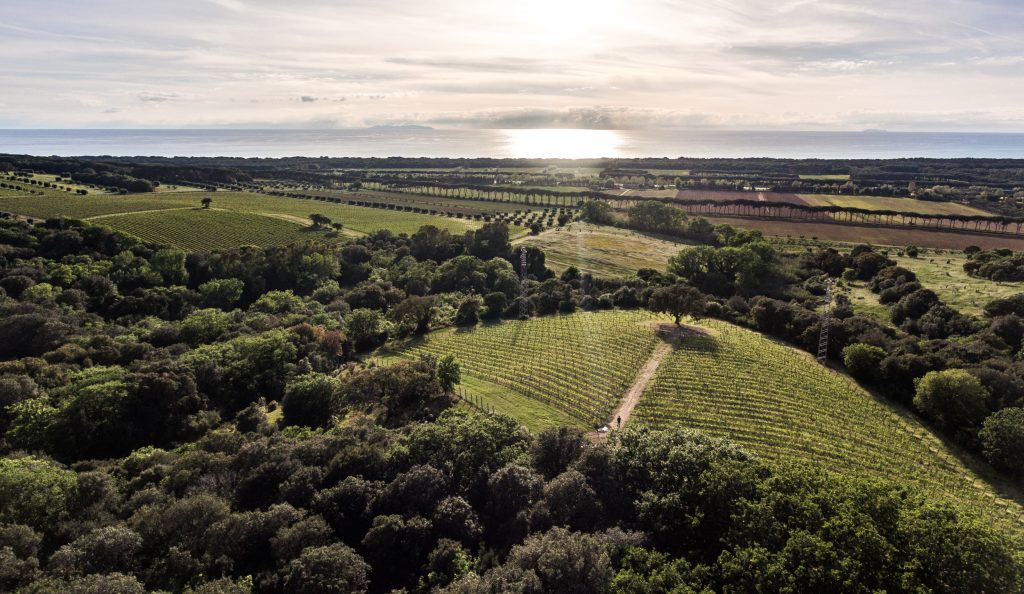
Among the celebrity estates of Bolgheri, Tenuta Argentiera flies somewhat under the radar.
The ‘Nose’ picked up the scent having been invited to a zoom talk and tasting. I was intrigued by the story of a wine named Ventaglio for this promised something more unusual for Bolgheri – not only is it a single varietal Cabernet Franc, but it is a true terror wine coming from a single 1.2 hectare vineyard. It is called Ventaglio, after the rows of vines which fan around the circumference of a small hill.
I expected something ostentatious – a bold and showy IGT in a heavy bottle – Cabernet Franc sexed up – but on the contrary Ventaglio is sleek, sophisticated and serious, a handsome wine indeed – albeit in a heavy bottle.
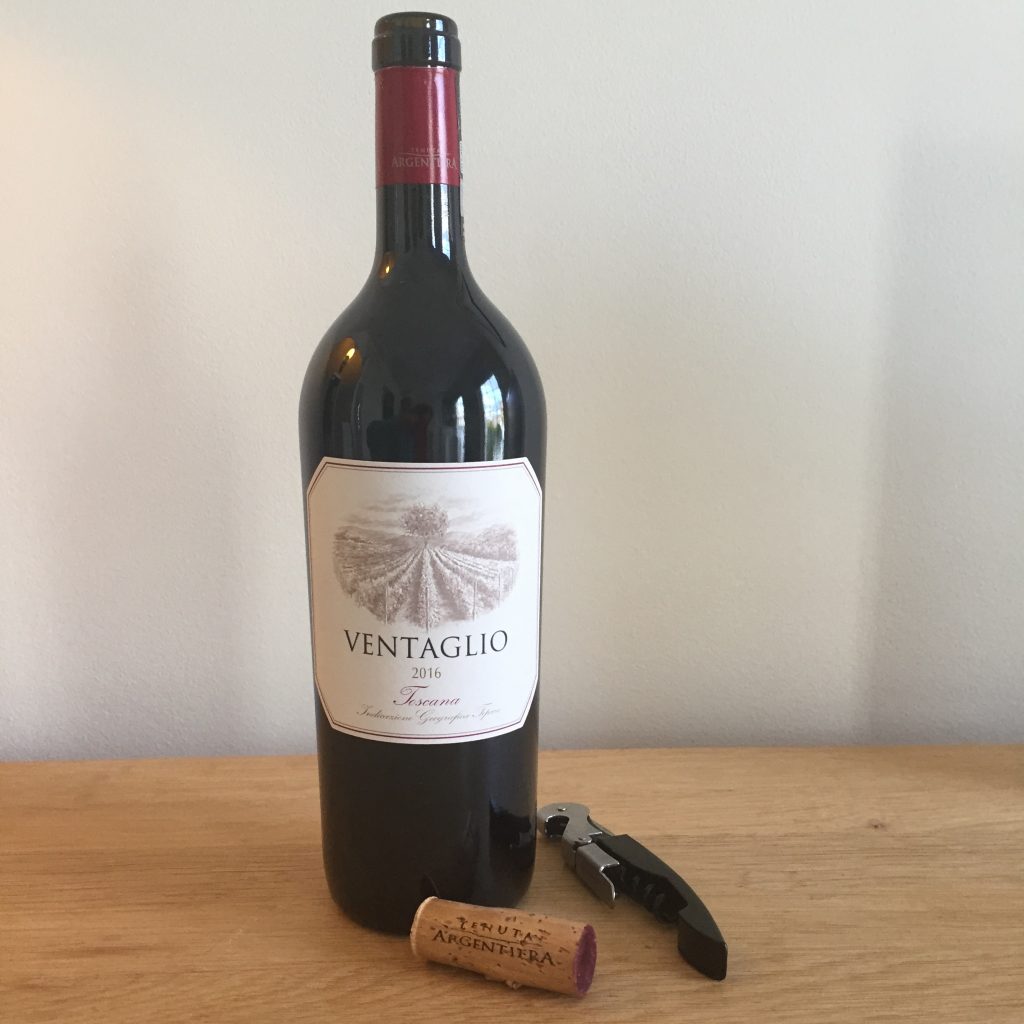
But let’s backtrack a moment and set the scene. As all wine lovers know Nicolò Incisa della Rocchetta put Bolgheri on the map by commercialising the 1968 vintage of Sassicaia, the Bordeaux blend his father Mario had made for family and friends from vines planted in the 1940s at Tenuta San Guido.
This coastal area of Maremma is quite distinct from heartland Tuscany. The land around the village of Bolgheri was traditionally used for growing vegetables, olives and grapes to produce rosé wine. Away from the coastal strip there were cereal crops, grazing used for cattle and scrubland. Sassicaia, followed by Ornellaia in the mid 80s, raised awareness in the potential of this coastal area, and it was gradually converted to viticulture. In their wake Bolgheri estates eschewed Sangiovese and focused on Cabernet Sauvignon, Merlot, Cabernet Franc and Petit Verdot. True to Bordeaux fashion the wines are generally estate blends, drawing on a diversity of terroir.
Bolgheri attained DOC status in 1994 for a style of wine, an Italian interpretation of a Bordeaux blend. The Bogheri expression can be more restrained than Super Tuscans from heartland Tuscany. The proximity to the Tyrrhenian Sea may permit an elegant expression, however there is no escaping the fact that it can be pretty hot here. Moreover the reflected light from the sea increases the total light with its ‘mirror effect’. On the other hand the sea helps to moderate the temperature, cooling the vineyards with damp coastal breezes.
Tenuta Argentiera, named after the Etruscan silver mines of the region, lies in the Donoratico Hills, far to the south of Bolgheri away from the epicentre clustered around the famous estates. It began with a flourish in 1999, a latecomer in some respects. The estate belonged to the Fratini family, who in just three years cleared sixty hectares of scrub and planted vines. The Antinori family were instrumental in getting this project off the ground, lending their expertise to Fratini in the early days.
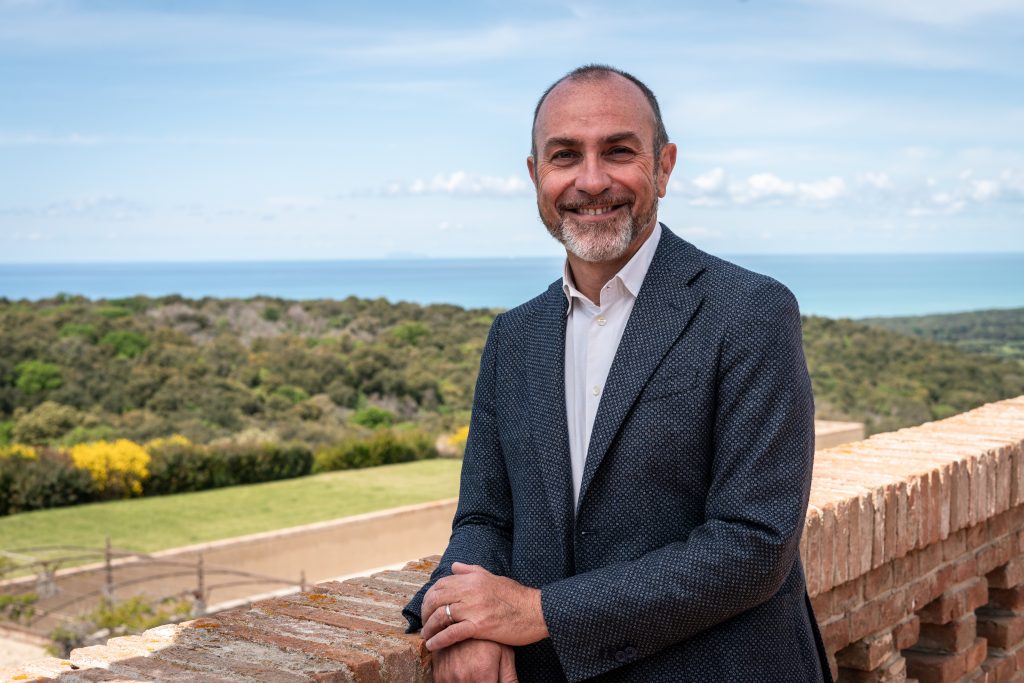
The zoom tasting was hosted by general manager and agronomist Leonardo Raspini and Nicolò Carrara, the winemaker. It was certainly lively as Leonardo leapt up on a number of occasions to hold large large boards in front of the camera to illustrate the terroir. (Tenuta Argentiera’s website is also very informative.)
The estate (now 80 hectares) has diverse terroir, encompassing a patchwork of soil types, but it seems the most significant differences with the land around Bolgheri village, are the higher altitude and the east facing ridge which is sheltered by the forest along which the vineyards are planted. Together these factors create a marginally cooler microclimate of approximately 2 degrees celsius.
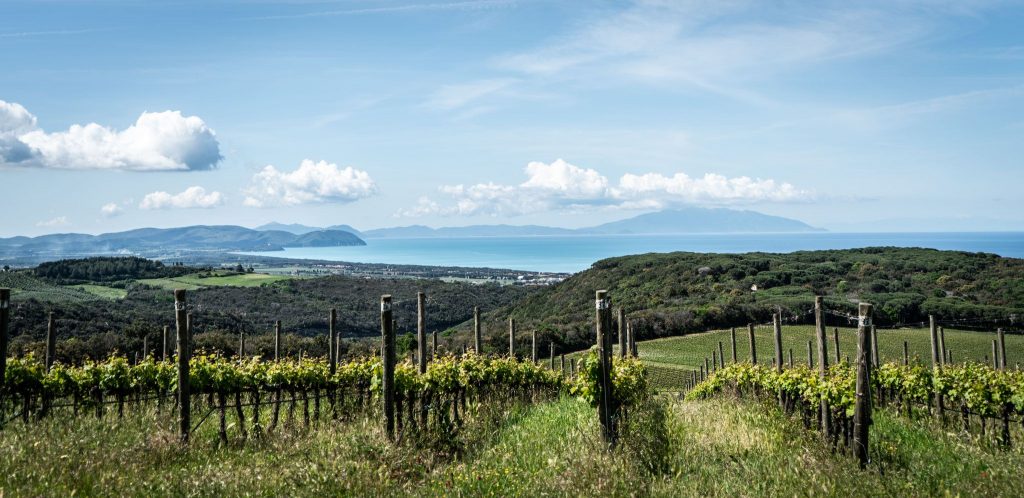
The Nose was sent three wines to taste.
First up is Villa Donoratico, DOC Bolgheri Rosso. This comes from a eleven hectare section in the northern part of the estate (nearest to the village of Bolgheri) and from lower lying vineyards. While these are further from the coast, with fewer coastal breezes, the vineyards have a northern exposure which help retains freshness. The lowest vineyards at 30m are more sandy, while those at 100m combine some clay (in which Merlot thrives) and stone. The sandier soils would certain account for the fruity accessibility of this wine.
A quick aside about vintages. The 2019 vintage was equally successful in Bolgheri as inland Tuscany. It was hot and dry, but there were good water reserves and some rain at the end of July. The stems were properly lignified in 2019 and some whole bunches were used.
The 2018 was a cooler, wetter and more challenging vintage. July and August were quite cool, but September was dry and windy. I found the 2018 Argentiera fresh and energetic.
2016 was described as a tough vintage for the vegetation. A large rainfall at the end of August helped. It’s a powerful vintage.
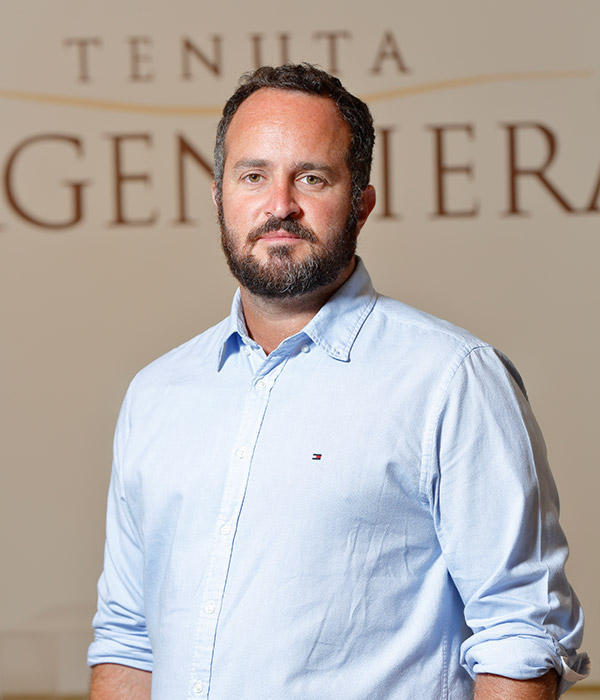
Leonardo and Nicolò point out that the quality and health of vintages on the coast do not always follow inland Tuscany. In cold, fresher and rainier vintages Bolgheri typically suffers less from disease, while the light reflected off the sea in the afternoon gives vines an advantage. Vintage timing is earlier in Bolgheri – mid September for Cabernet Sauvignon and Cabernet Franc, which in some vintages can be an advantage, but in 2010 the weather in the first half of September was poor, while inland (Montalcino was singled out) benefited from holding out through the much better second half of the month.
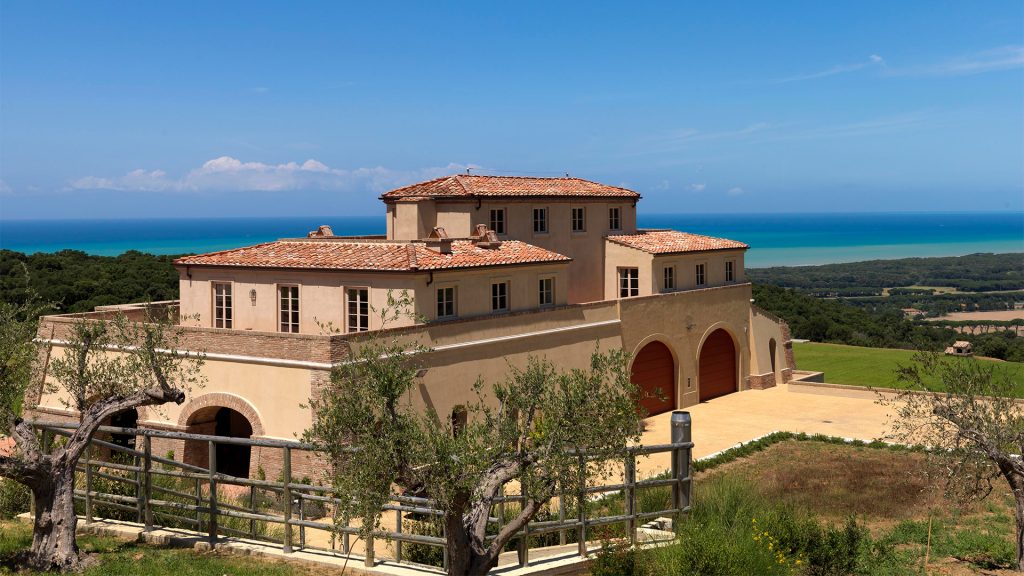
Moving up the hierarchy, there is Argentiera, a Bolgheri Superiore. This wine is a blend, the grapes for which come from a myriad of vineyards which range from low lying sandy vineyards at 20m up to 200m, but the focus is on the higher altitude. The second level has more clay and the the upper more stone and schist. At 150-200m the terroir is Fliche – geologically one the oldest formations (sedimentary rocks consisting of limestone, marl and argillite with sandstone and siliceous rock). To keep it simple – these higher vineyards have more clay and of course a greater temperature swing between warm days and cooler nights.
And top of the heap – Ventaglio
In 2012 a small hill, 80m above sea level and 2 km from the coast, was planted with Cabernet Franc. The rows were planted through 270 degrees – South to North-East – like the spokes of wheel or indeed a fan, after Ventaglio from this hillside vineyard takes its name. The soil is clay loam with gravel and limestone pebbles – a profile known as Eagle’s Nest in regional classification.
In 2015 the estate changed hands, bought by the Austrian industrialist Stanislaus Turnauer. He clearly has a passion for wine for he moved his family to Bolgheri, but wisely gave his talented team the liberty to focus on the terroir and produce the best wine with minimal intervention.
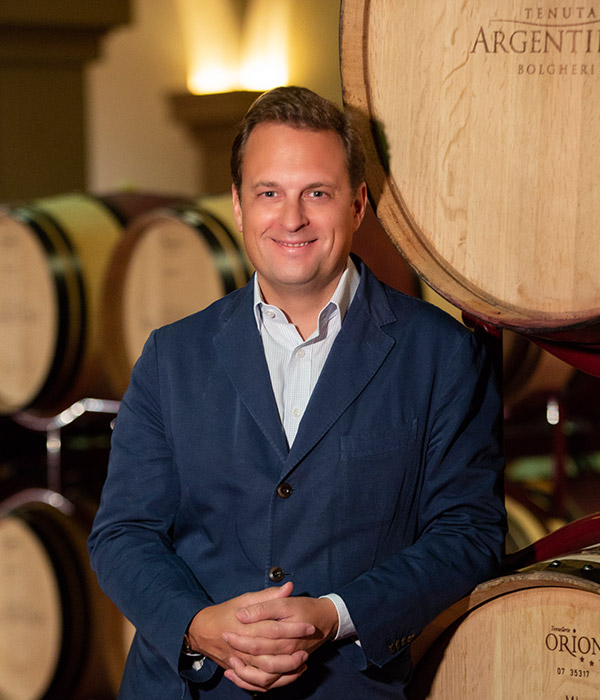
Ventaglio is made in wooden tanks and aged largely in 500l barrels with a maximum of 25% new oak, some coming from the Austrian cooperage Stockinger.
The first vintage of Ventaglio, 2015, was 85% Cabernet Franc, while 2016 is 100%. (There are 2400 bottles, which are already allocated to collectors.) The tentative first step wasn’t explained, but why not go for broke? A single varietal must be labelled IGT, but in the context of Super Tuscan history, this is patently not an issue. It’s not the first single vineyard, single varietal. Merlot based Masseto is the stellar example, but with this newcomer, the team at Tenuta Argentina have their sites set on a place in the Bolgheri firmament.
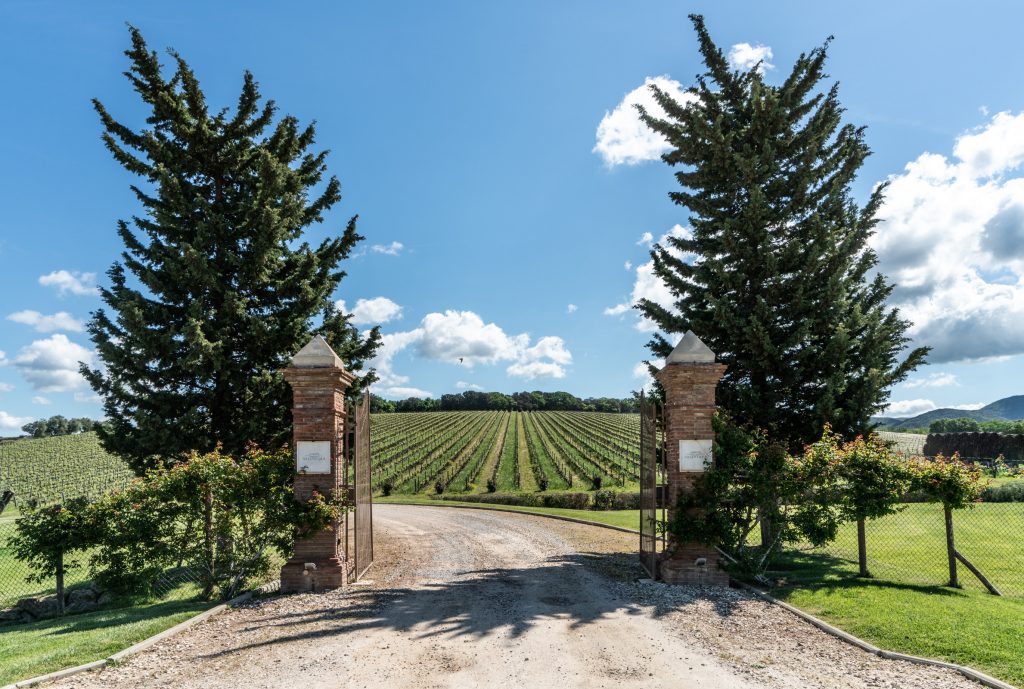
Tenuta Argentiera, Villa Donoratico, Bolgheri 2019
50% Cabernet Sauvignon, 30% Merlot, 15% Cebernet Franc and 5% Petit Verdot.
A ripe, forthright expressive aroma with a hint of liquorice, methyl and Earl Grey tea. Packs a juicy punch. Deliciously ripe, but vibrant and the tannins have a bit of grip. Nicely balanced. An appetisingly bitter umami note to finish. This is a well structure wine which delivers on fruit and a decent level of complexity. Score 16.
Tenuta Argentiera, Argentiera, Bolgheri Superiore 2018
It is 50% Cabenet Sauvignon, 40% Merlot and 10% Cabernet Franc.
Seductively perfumed aroma combining high toned white pepper notes with lower toned shades of violet, vanilla and camomile. It flows into a sumptuously smooth and inviting palate, which has elegant fluidity. It is quite trim and just deliciously laced with freshness. Soft at the beginning, it focuses across the palate, to become tighter and lively and even quite piquant. The finish is nicely sustained and has vibrancy, lift and brightness. Score 17.5 From 2024-33
Ventaglio, IGT 2016
Discreet aroma – a subtle, silky perfume. Quiet and intense palate. It has a refined texture and shimmers with freshness. The flavour spectrum includes some earthier notes, a light herbal edge and tangy, sooty bitterness on the finish which contrasts and balances the sweeter smoothness in the mid palate. Such a refined Cabernet Franc. Beautifully persistent with a chalky, powdery quality on the finish. Score 18.5 From 2025-35+

